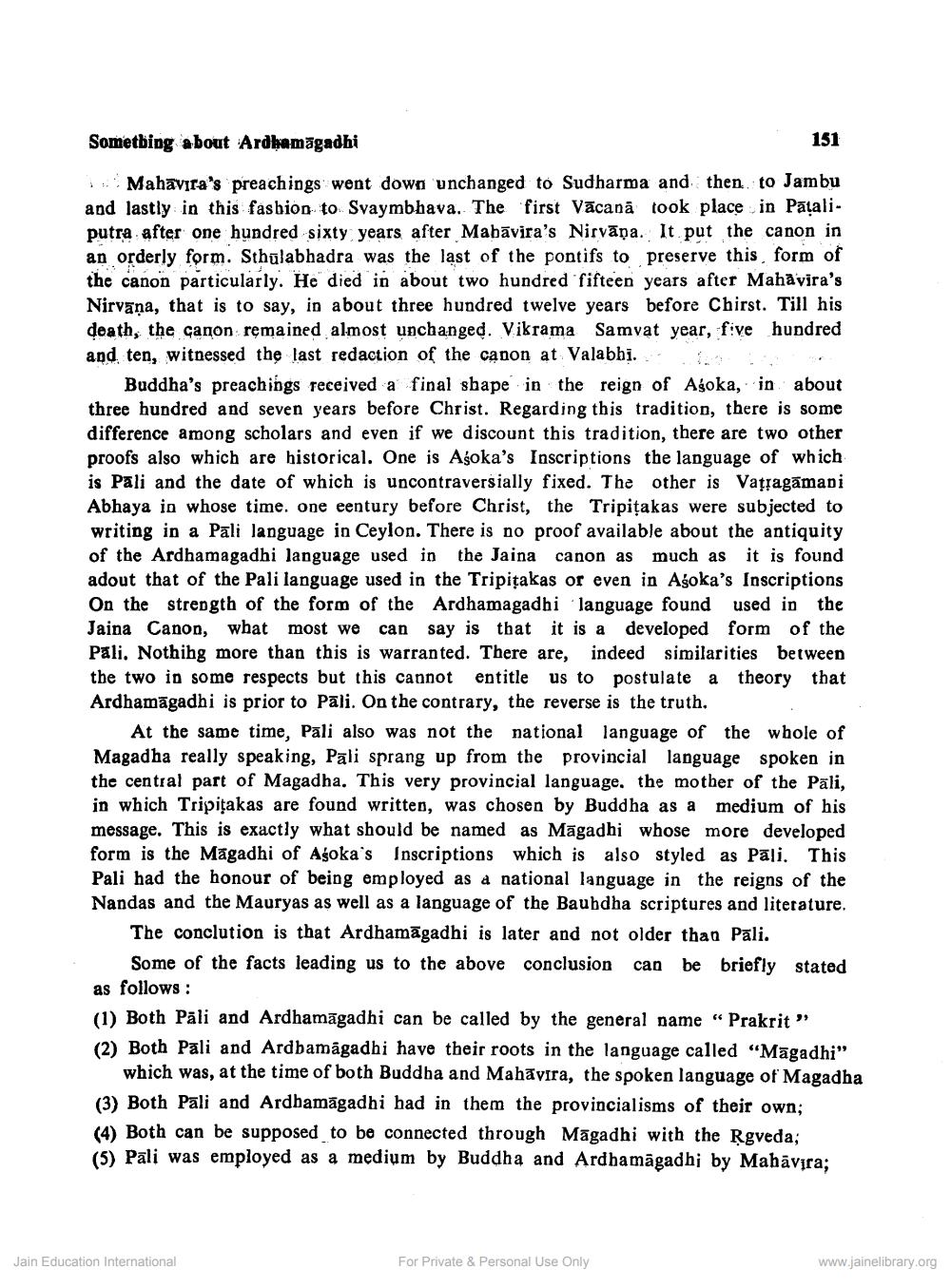________________
Sometbing about Ardhamāgadhi
151 Mahavira's preachings went down unchanged to Sudharma and then to Jambu and lastly in this fashion to Svaymbhava. The first Vācană took place in Pataliputra after one hundred sixty years after Mabāvira's Nirvāṇa. It put the canon in an orderly form. Sthulabhadra was the last of the pontifs to preserve this form of the canon particularly. He died in about two hundred fifteen years after Mahāyira's Nirvana, that is to say, in about three hundred twelve years before Chirst. Till his death, the canon remained almost unchanged. Vikrama Samvat year, five hundred and ten, witnessed the last redaction of the canon at Valabhi.
Buddha's preachings received a final shape in the reign of Agoka, in about three hundred and seven years before Christ. Regarding this tradition, there is some difference among scholars and even if we discount this tradition, there are two other proofs also which are historical. One is Asoka's Inscriptions the language of which is Pali and the date of which is uncontraversially fixed. The other is Vatragāmapi Abhaya in whose time. one eentury before Christ, the Tripitakas were subjected to writing in a Pali language in Ceylon. There is no proof available about the antiquity of the Ardhamagadhi language used in the Jaina canon as much as it is found adout that of the Pali language used in the Tripitakas or even in Ağoka's Inscriptions On the strength of the form of the Ardhamagadhi language found used in the Jaina Canon, what most we can say is that it is a developed form of the Pali. Nothing more than this is warranted. There are, indeed similarities between the two in some respects but this cannot entitle us to postulate a theory that Ardhamāgadhi is prior to Pāli. On the contrary, the reverse is the truth.
At the same time, Pali also was not the national language of the whole of Magadha really speaking, Pāli sprang up from the provincial language spoken in the central part of Magadha. This very provincial language, the mother of the Pāli, in which Tripitakas are found written, was chosen by Buddha as a medium of his message. This is exactly what should be named as Māgadhi whose more developed form is the Magadhi of Agoka's Inscriptions which is also styled as Pāli. This Pali had the honour of being employed as a national language in the reigns of the Nandas and the Mauryas as well as a language of the Baubdha scriptures and literature.
The conclution is that Ardhamāgadhi is later and not older than Pāli.
Some of the facts leading us to the above conclusion can be briefly stated as follows: (1) Both Pāli and Ardhamāgadhi can be called by the general name “ Prakrit” (2) Both Pali and Ardbamagadhi have their roots in the language called "Māgadhi"
which was, at the time of both Buddha and Mahāvira, the spoken language of Magadha (3) Both Pali and Ardbamāgadhi had in them the provincialisms of their own; (4) Both can be supposed to be connected through Māgadhi with the Rgveda; (5) Pāli was employed as a medium by Buddha and Ardhamāgadhị by Mahāvira;
Jain Education International
For Private & Personal Use Only
www.jainelibrary.org




